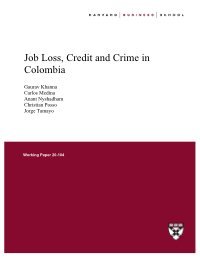By The International Crisis Group
Criminal groups in Mexico and the Northern Triangle of Central America (El Salvador, Guatemala and Honduras) have been quick to absorb the shock of the COVID-19 pandemic and seize new opportunities provided by lockdowns, distracted states and immiserated citizens. At first, trade disruptions and movement restrictions forced some criminal outfits to slow illicit activities. But the lull has not lasted. Exchange of illicit goods already appears to be swinging back to normal, while extortion rackets are resurging. As the region’s recent history shows, quick fixes to rein in organised crime and official corruption are very likely to be counterproductive. Instead, governments should concentrate their limited resources to aid the most violent regions and vulnerable people, ideally through regional programs to curb impunity and create alternatives to criminal conduct. After months of lockdowns of varying severity, with disease transmission still uncontrolled and poised to spike again, the threat of rising crime across the region is manifest. Mexico has been afflicted for years by transnational criminal organisations that feed off a lack of economic opportunity and corruption in the state and security forces. The new force in the underworld, the Jalisco Cartel New Generation, has bared its teeth during the pandemic in fights for control of illicit markets such as drug trafficking and “taxing” legal commodities. It has also displayed its paramilitary might in the media. Myriad criminal groups have claimed to be lifelines for local people, largely in bids to widen their support base. Across the north of Central…..
-
America, street gangs that have lorded it over their economically struggling strongholds for years have also found ways to take advantage of the pandemic. After the outbreak, they advertised themselves as champions of communities under lockdown, handing out food baskets and forgiving protection payments. Due to COVID-19 movement restrictions, violence fell briefly in Honduras and Guatemala. But it is now back to or above pre-pandemic levels, while extortion rackets in both countries appear set to intensify. El Salvador is an outlier in that murder rates have stayed close to historical lows for reasons that remain disputed. The government says its security plan has kept violent gangs at bay, while Crisis Group has suggested that gang and government leaders may have struck an informal agreement to scale back violence. But, if such a pact exists, neither side has acknowledged it in public, and sudden spates of killings underline that gangs’ commitment to peace is far from robust. Behind concerns about deteriorating security in Mexico and northern Central America is the realisation that the pandemic (and counter-measures) will worsen the economic and institutional ills underlying the crime wave. The incidence of COVID-19 varies from country to country, but it is hard to imagine that any will avoid a negative impact on livelihoods, public services and the popular mood. Mexico ranks fourth worldwide with its officially reported death toll of over 90,000 – which the government admits is an undercount – while rates of infection in northern Central America stand around the Latin American average. Nonetheless, all four countries are now facing one of the most severe economic contractions in decades, made worse in Central America by the recent devastation left by Hurricane ETA. Expected falls in 2020 GDP, reaching close to 10 per cent in Mexico and El Salvador and causing unemployment to soar across the region, are set to reverse advances in reducing inequality and poverty, weaken public services in poor areas, intensify criminal rivalries and sharpen officials’ motives for consorting with illicit business.
Brussels: International Crisis Group, 2020. 37p.









